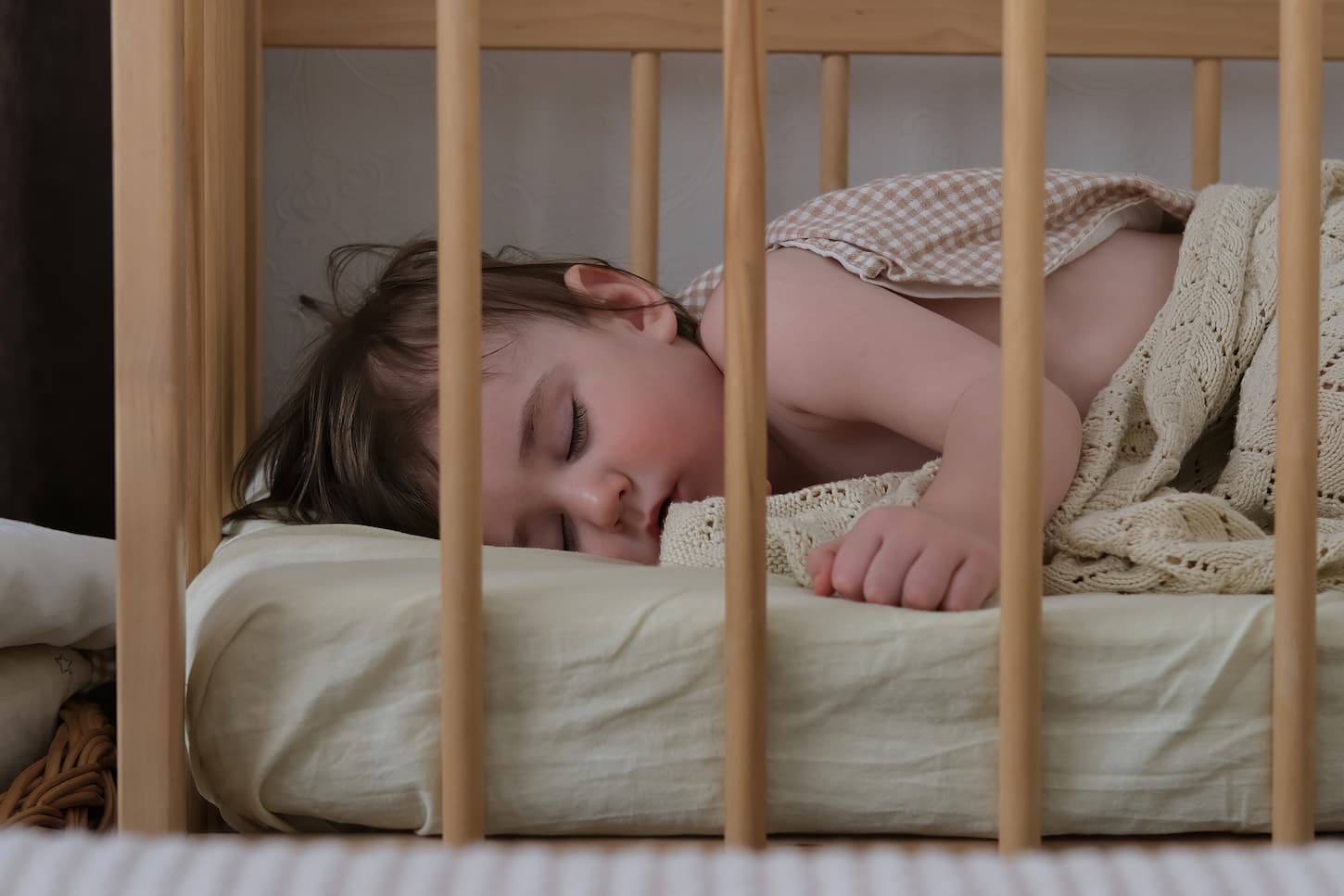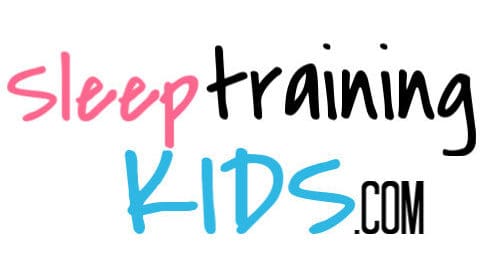As cute as it is to hold your baby all day, sometimes you just need a few minutes to yourself – whether it’s for a few minutes while your baby is cooing, for a nap, or for the whole night. This makes it only natural to wonder – can a baby sleep in a crib right away?
In general, most babies start in a bassinet or small crib next to their parent’s bed and transition to a standard-sized crib somewhere between 3-6 months of age. The transition can be gradual or quick, as long as the baby is comfortable and safe.
Ready to learn more about when and how babies can sleep in a crib right away – and when it’ll fail? Keep reading – and let’s discuss getting babies into cribs right away versus transitioning them there over time.

Can a Baby Sleep in a Crib Right Away?
In general, some babies can sleep in a crib right away while others won’t sleep unless held by a parent. It varies widely from child to child, based on their demeanor, how easily they sleep, their health, and other factors. Thankfully, most babies will be able to move to a crib at some point, even if they can’t sleep in it right away.
Here are some tips to make it more likely that your baby will sleep in a crib right away.
- Make the crib space safe for your child. SIDS-related studies (source) find that cribs tend to be too full of stuffed animals, blankets, and other cute items. Babies don’t need those items, and in fact, those items can become choking or suffocation hazards.
- Create a cute, age-appropriate sleeping space for your child. It doesn’t have to be sterile or ugly. You can still make it cute – but take out items that could pose a problem to your child. Potential problems vary by age, so be aware of that. A newborn doesn’t need a giant cuddly bear – but a two-year-old may love a small stuffed animal to hug.
- Expect the unexpected. Sometimes babies can sleep the whole night in the crib without waking up once. Sometimes, they will wake up after every 15 minutes. Patience is the only solution here, as your baby will be able to feel your anxiety or frustration. And when you’re frustrated? Most babies will mirror that emotion back to you.
- Develop a routine for your child to make the process easy and breezy for you. You need to observe your kid’s sleeping behavior and pattern and then take steps accordingly. Understanding a child’s sleeping psychology will make the process a whole lot easier.
Once the crib is safe and comfortable, the only thing left to do is try it. See if your baby will go for it. If not? That’s okay. You can transition there more slowly to make your baby feel safe, loved, and ready to sleep in a crib.
How Early Can Baby Sleep in a Crib?
Parents usually use their bed, bassinet, or side-sleeper as the first option for creating their child’s sleeping patterns. They choose this because it becomes convenient and approachable to soothe the baby at night. It also becomes feasible to rock them back to sleep and feed them.
The average transition time for babies is 3-6. Multiple underlying factors include your child outgrowing the bassinet, increasing dependency on you, or feeling uncomfortable in the bassinet. If any of the above three points happen, it is time for upgradation.
However, if you feel that your child is still feeling more comfortable in a bassinet or side-sleeper, then you can delay the process. Nevertheless, the prolonged delay will lead to increase resistance. Therefore, it is better to start working early than to be late.
How Do You Safely Put a Sleeping Baby in a Crib?
According to AAP (American Academy of Pediatrics), there is a four-step method for safe sleep practices. Those four steps are:
- Place your baby to sleep on their back: The best way is to put the baby on their back even if it is nap time or proper sleep time at night. Research has found that it reduces the risk of sudden infant death syndrome (SIDS).
- Have a firm sleeping surface: Babies need firm mattresses to keep their airways secure. Soft or lumpy mattresses can actually be a suffocation risk. So can pillows. So get a firm mattress and don’t provide children under the age of two a pillow. It reduces the risk of suffocation and works on the child’s posture.
- Avoid having soft objects in the crib: It is a prime point for a child’s safety to free the sleeping area from loose bedding or soft objects (including stuffed animals). It is significant because it prevents the baby from strangulation, suffocation, choking, and congestion.
- Share the room, not the bed: Bed-sharing, while still a common thing, does have a greater risk of sleeping-related injury or death (including SIDS). It’s heartbreaking as a nurse when a parent rolls over a child in their sleep. That’s why the AAP recommends that you only share a room – and never a bed.
If you do want to share a room (but not the bed) with your baby, that’s awesome. There are lots of side-by-side options or mini bassinets or pack-and-play cribs that you can keep right next to your bed.

Transitioning Baby to Sleep in a Crib
Whenever you decide to transition your baby to the crib is your choice. In general, many parents choose to do it after the first 3-6 months or so. Here are some tips I’ve learned from experience, from talking to other parents or seeing in parenting groups and forums.
- Start some naps in the crib. This will help the baby feel more comfortable sleeping there for longer stretches.
- Let your baby play in the crib while awake. This can help them acclimate to the sights and smells of the crib.
- Transition your baby to sleeping in the crib after they’ve fallen asleep.
- Time to move your baby to the crib to go with any of the various sleep training methods and follow the steps as outlined in the method.
These are by no means the only way to do it. They’re just the most common ways that seem to be repeated from family to family. But if you find they don’t work for you? That’s okay. Now you know better what doesn’t work. That will help you find what does work.
And to help you keep track of what does and doesn’t work, make sure you check out my sleep training planner and journal on Amazon. It’ll help you step by step.
Final Thoughts on Babies and Cribs
Cribs are a fantastic bed for kids. Always make sure that you get one that’s safe. I know that the drop-side cribs were popular for a long while – and then they got recalled. Some had kits to fix them into a safe, stationary position. That’s what we used for the longest time.
In any case, I point that out because it is a hugely popular practice to reuse old cribs. So if you’re in that boat, I get it. That’s what we did. But find out how to make the cribs safe – and use the kits. Always use a safe, firm mattress that’s been rated as safe for babies.
And if you have to keep the baby in your same room, even for sleep training? That’s okay. I’ve got you covered with this article on sleep training while sharing a room.
Resources
Learning about parenting or sleep training techniques is important to learn from various reputable sources. These are the sources used in this article and our research to be more informed as parents.
- About 3,500 Babies in the Us Are Lost to SLEEP-RELATED Deaths Each Year. 9 Jan. 2018, www.cdc.gov/media/releases/2018/p0109-sleep-related-deaths.html.
